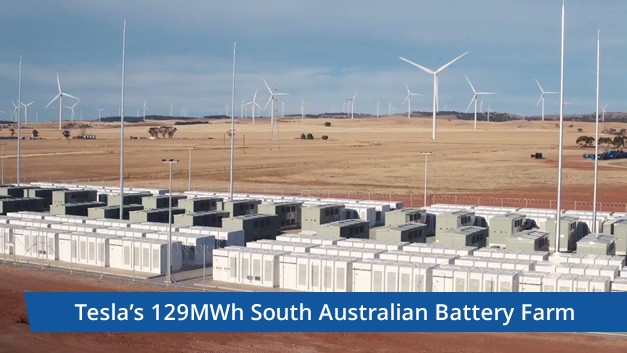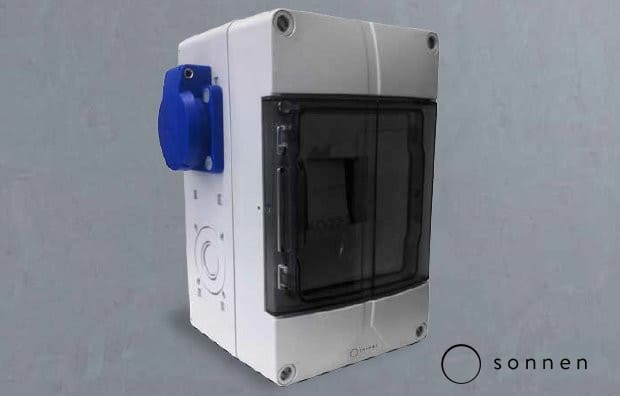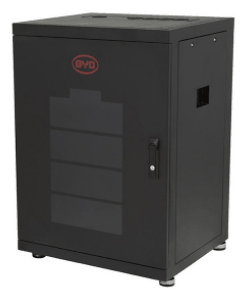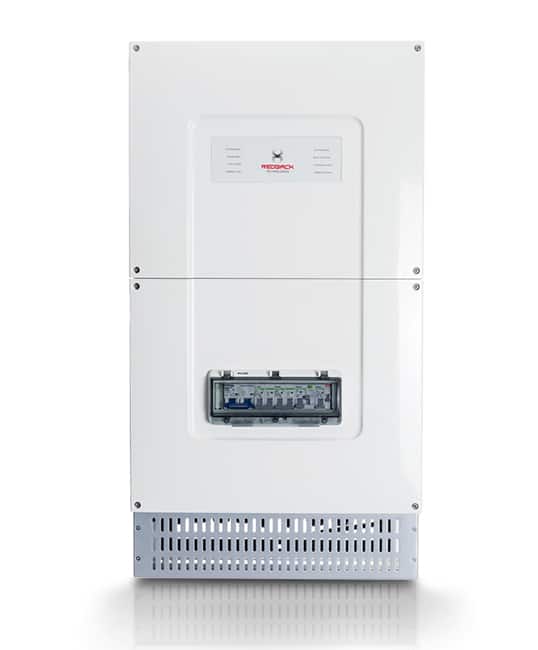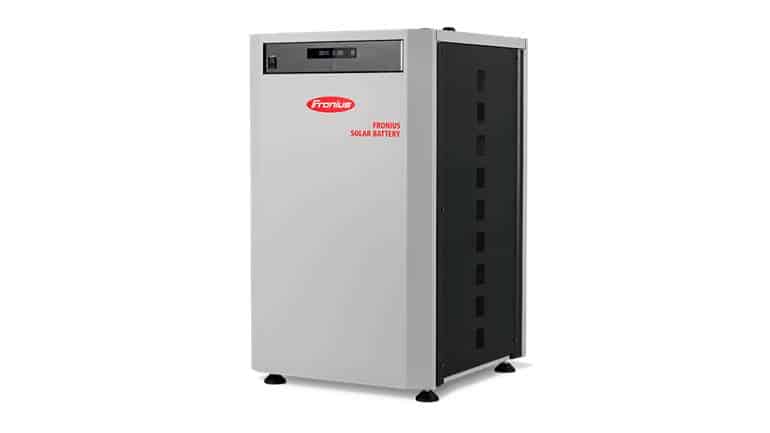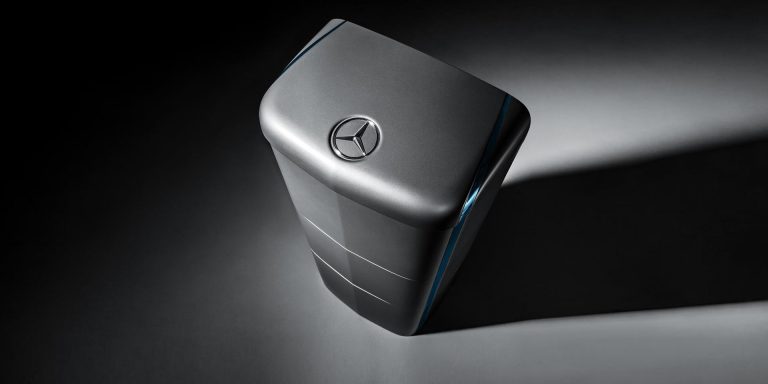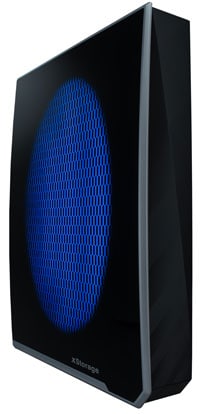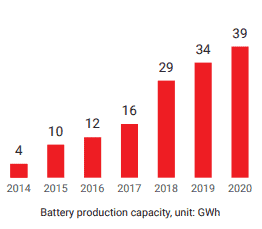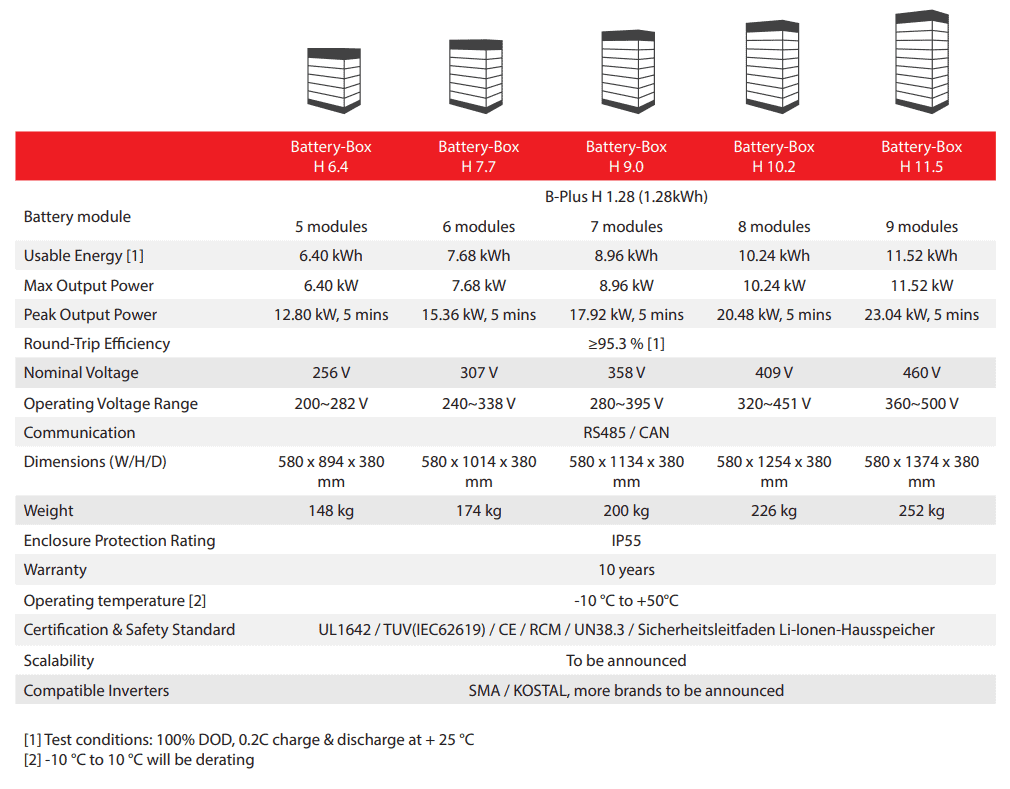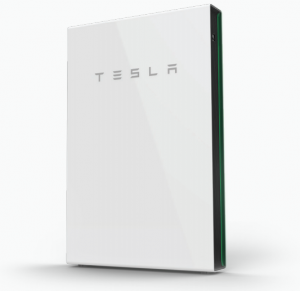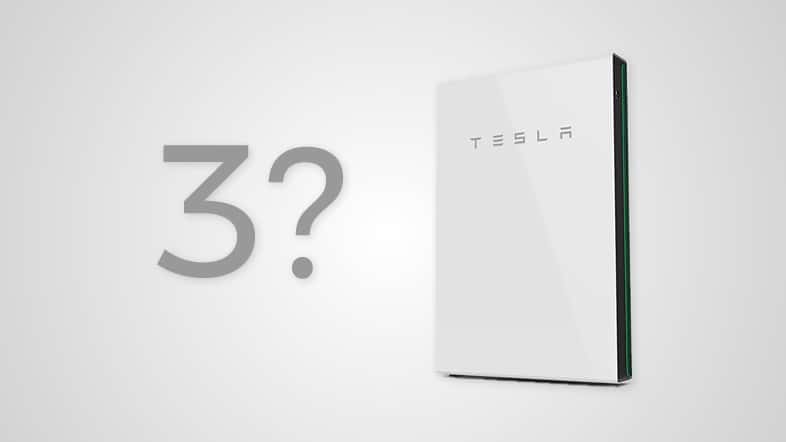
With the great success of the Tesla Powerwall 2, people are already talking about its successor. Although the Powerwall 2 is a fantastic device and can help many households save a lot of money on their power bill, it’s far from a ‘no brainer’ at this point – you need to crunch the numbers to ensure it’s going to be worthwhile to install in your house. But with the cost of lithium-ion dropping rapidly and Tesla competitors chomping at the bit with innovative solutions to battery storage, we’ve no doubt that there’s plenty of work being done on the Tesla Powerwall 3. Could this be the device that finally makes PV solar + storage a standard for homes? Tesla CEO Elon Musk has said that they “expect to sell more Powerwalls than cars” so it’s a major part of their business. What features will the Powerwall 3 have? What will it cost and when can we expect it? Read on for more…

Tesla Powerwall 3 Release Date
At this point we aren’t sure exactly when the Powerwall 3 is coming out, but let’s look at the time difference between the Powerwall and the Powerwall 2 and see if that gives us any clues:
Powerwall 1: Development commenced in 2012. Announced in 2015 with a pilot demonstration 0f 500 units built and installed. Production moved from Tesla Fremont to Gigafactory 1. Initially came in two models – 10kWh nickel-cobalt-aluminium cathode for backup and 7kWh for daily cycle application. Work on the 10kWh battery was discontinued and they focused on the 7kWh model and brought it to Australia in 2015, with a ten year limited warranty.
Powerwall 2: Development commencement unknown. Announced in October 2016 at Universal Studios. Production of 2170 cylindrical lithium-ion batteries for the Powerwall 2, Powerpack 2 and Model 3 EVs starts in January, 2017. First Australian installations early June, 2017.
Powerwall 3: Potential 2021 announcement?
October 2020 update: The price of a Powerwall 2 installation in Australia has risen from $11,700 to $12,500.
February 2021 update: Tesla have increased the price of their Powerwall 2…again. It’s gone up another $800, to $13,300 (13.5kWh system).
Not sure what this means for the 3, but watch this space.
Tesla Powerwalls in 2023
According to GTM, in Q4 2017 they deployed 143 MWh of energy storage products, which represented a 45 percent from the same quarter YOY (year-on-year). The 129 MWh of energy storage the Tesla Battery in South Australia partnership last year will be represented in their figures for Q1 2018.
“Solar [megawatts] deployed declined as volumes continue to be impacted by our decision to close certain sales channels earlier this year and to focus on projects with better margins,” Tesla stated. “In addition, solar deployments were affected by the short supply of Powerwalls for customers who wanted solar plus Powerwall in their house. While volumes may continue to be impacted by these factors over the near term, we expect growth to resume later this year.”
So they were about to build the South Australian battery farm within the 100 days they promised, Tesla had Samsung supply the batteries instead of manufacturing them at their Gigafactory. So it looks like they have a way to go with regards to scaling up their manufacturing processes before we start to even think about seeing a Powerwall 3.
In America, they’ve released new pricing (thanks to CleanTechnica for the stats):
Effective October 12th, 2018, the new pricing for three energy products is as follows (in USD):
- Powerwall: $6,700 (originally $5,900)
- Gateway: $1,100 (originally $700)
- Installation: $1,000–3,000 (depending on complexity)
“The Tesla Powerwall is a genuinely good option for consumers considering energy storage, and that quality is part of the reason why so many consumers are asking solar installers for it,” Nick Liberati, communication manager for EnergySage, a solar energy system price comparison site operating in over 30 states, tells Inverse. “However, it’s Tesla’s overall brand recognition and luxury appeal that really sets the Powerwall apart from other battery competitors.”
Send Me Tesla Powerwall 3 News
Fill in the form below to be added to our Powerwall 3 mailing list. We’ll email you when we have any information about the Powerwall 3 or have any updates on this article!
Tesla Powerwall 3 Specifications and Features
Tesla Powerwall 1 Specs
| Dimensions | 1302mm long, 862mm wide, 183cm diameter (51.3″ x 34″ x 7.2″) |
| Battery | 7kWh battery (6.4kWh ‘Usable Capacity’) |
| Power | 7kW peak power, 5kW continuous power. |
| Scalability | up to 10 Powerwalls |
| Weight | 97kg (214 pounds) |
| Cooling | Liquid Cooling (liquid thermal control) |
| Efficiency | 92.5% round-trip DC efficiency (at optimal conditions – 25 degrees celcius (77 Fahrenheit) with 2kW charge/discharge power) |
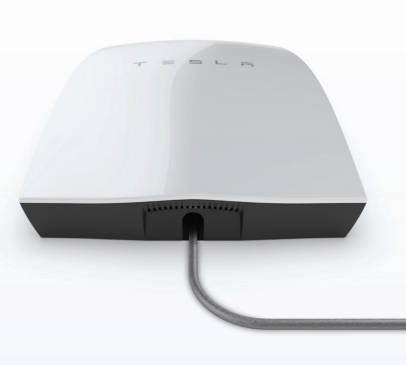
- Wall or floor mountable, indoor or outdoor.
- 100% Depth of Discharge
- 10 year unlimited cycle warranty
Tesla Powerwall 2 Specs
| Dimensions | 1150mm long, 755mm wide, 155mm diameter. (45″ x 30″ x 6″) |
| Battery | 14kWh battery (13.5kWh ‘Usable Capacity’) |
| Power | 7kW peak power, 5kW continuous power. |
| Scalability | up to 10 AC-coupled Powerwall 2’s |
| Weight | Weighs 119.9kg (264.4 pounds) |
| Cooling | Liquid Cooling |
| Efficiency | >90% round trip efficiency. |

- Wall or floor mountable, indoor or outdoor.
- 10 year manufacturer’s warranty
- Integrated Inverter (converts the DC energy into AC energy you need to use in your house)
- Control and view your energy usage/storage with the Tesla app (iOS and Android)
- Degradation – it will hold around 70% of the 13.5kWh after 10 years.
- Wi-Fi, Ethernet, 3G connectivity.
- Off-grid support (AC Coupled)
- Single Phase feed in.
- 100% depth of discharge available.
- Outside of the USA: Powerwall 2 doesn’t include inverter with the DC version and only works with a Solar Edge inverter.
Tesla Powerwall 3 Specs
This is all conjecture at this point, but we think some of the features the Tesla Powerwall 3 could include:

- Heavily optimised for and integrated with Tesla Solar Roof (Aussies can preorder one now, will be available in 2018)
- Heavily optimised and integrated with Tesla Electric Car (Model S, Model 3 etc.).
- Upgraded intelligent energy management – will learn your household’s usage, draw from weather forecasts etc. to ensure your house, battery, car or hot water stay at 100% and you are only feeding back into the grid when it’s optimal.
- Inbuilt hybrid inverter (i.e. you can plug solar panels directly into it, eliminating the need for a separate inverter for your solar panels. The current inverter is just a battery inverter)
- 28kWh battery (~26kWh usable capacity)
- We predict they’ll stick with lithium-ion for the battery as its price is very affordable.
- Alternatively, Tesla may stick with the 14kWh batteries, make them smaller and easier to install – 14kWh is sufficient power for many households – it depends on the cost/size of the batteries)
- Single and three phase power compatible.
- DC version includes inbuilt inverter.
- By 2019 Tesla expect their Gigafactory to manufacture 35 gigawatt-hours per year of battery cells. Almost as much as the current global combined battery production capacity. What will this mean for the Powerwall III?
- What features do you think the Powerwall 3 will have? What would make it a ‘no-brainer’ for you to purchase? Let us know in the comments.
Tesla Powerwall 3 Price
The cost of the Powerwall 1 and the Powerwall 2 was roughly the same, so we don’t expect the price of the Powerwall 3 to fluctuate more than around 20%.
Powerwall 1 Price (Australian Installation): Around $10,000 (7kWh battery, installation and supporting hardware included).
Powerwall 2 Price (Australian Installation): Around $12,000 -15,000 (14kWh battery, installation and supporting hardware included).
March 2019 – Prices for the Powerwall 2 and installation cost have increased between $1,000 – $2,500 due to industry changes. These have been factored into the price above.
Powerwall 3 Price: (Australian Installation): We estimate it will cost around $15,000 – $20,000 installed. Call it a hunch.
More about the Power Wall 3 and what to expect
Unleashing Energy Independence: Introducing Tesla Powerwall 3
Powerwall 3: Redefining Energy Storage
The Tesla Powerwall 3 represents the next evolution in residential energy storage technology. Designed as a sleek and compact unit, the Powerwall 3 seamlessly integrates into homes, providing a clean and efficient way to store excess energy generated from renewable sources like solar panels. With an increased energy capacity compared to its predecessors, the Powerwall 3 boasts an impressive storage capacity that can power an average household for several days, even during extended periods of low sunlight or grid outages.
Key Features and Advancements
1. **Enhanced Energy Capacity:** One of the most significant improvements of the Powerwall 3 is its increased energy capacity. Equipped with advanced lithium-ion battery technology, the Powerwall 3 can store more energy than ever before, enabling homeowners to store surplus energy during peak production times and use it during periods of high demand or grid instability.
2. **Seamless Integration:** Tesla has always prioritized design and aesthetics, and the Powerwall 3 is no exception. The sleek and compact design allows for easy wall-mounting and unobtrusive installation. It seamlessly integrates into both new and existing solar power systems, offering homeowners a seamless and visually appealing addition to their homes. It’s taking forever to arrive but we hope to hear more news about the device by end of 2023 or 2024 at latest.
3. **Smart Energy Management:** The Powerwall 3 is equipped with intelligent energy management software that optimizes energy consumption and storage. This feature allows homeowners to monitor and control their energy usage in real-time through a user-friendly app, giving them greater control over their energy costs and reducing their carbon footprint. How impressive will this be in the third iteration of the battery? Only time will tell.
4. **Grid Resilience:** In regions prone to power outages, the Powerwall 3 shines as a reliable backup power solution. During grid failures, the Powerwall 3 can automatically detect the outage and switch to its stored energy reserves, ensuring that essential appliances and devices remain operational.
Benefits and Impact
The introduction of the Tesla Powerwall 3 brings forth a multitude of benefits and potential impacts:
1. **Energy Independence:** Homeowners can rely less on traditional energy sources and reduce their dependence on the grid, resulting in greater energy self-sufficiency and cost savings over time.
2. **Environmental Benefits:** By efficiently storing and utilizing renewable energy, the Powerwall 3 will help reduce greenhouse gas emissions and contributes to a more sustainable future.
3. **Economic Savings:** The Powerwall 3 will allow homeowners to take advantage of lower electricity rates during off-peak hours and sell excess stored energy back to the grid, potentially generating additional income.
4. **Grid Stability:** Wide-scale adoption of energy storage systems like the Powerwall 3 can contribute to a more stable and resilient grid by reducing strain during peak demand periods.
What’s Next?
The Tesla Powerwall 3 represents a significant step forward in the pursuit of clean, sustainable, and independent energy solutions. With its enhanced energy capacity, seamless integration, and intelligent energy management, it offers homeowners a powerful tool to harness the potential of renewable energy sources and reduce their environmental impact. As the world continues to transition towards a more sustainable energy future, innovations like the Powerwall 3 are poised to play a crucial role in shaping the way we power our homes and communities.
Powerwall Installers in Australia
There are quite a few companies ready to install the Powerwall 2 in Australia – here are some:
Powerwall Alternatives
If you’re not necessarily sold on the Powerwall 2 and don’t want to wait for the Powerwall 3, there are many Powerwall competitors and alternatives you can investigate, such as sonnen, BYD B-Box Solar Battery, Redback Technologies, Fronius, Mercedes-Benz, and Eaton Nissan xStorage.
Want more alternatives to the Powerwall? Our Solar Battery Comparison area will help – if you have any questions or would like some guidance please email us or simply ask in the questions below! While the Powerwall is certainly an amazing product, depending on your personal circumstances you can get a better result by using one of its competitors. The sonnenBatterie, for example, is onto its 8th iteration and powers 75% of German energy storage – it has a modular capacity from 2-16kWh and, amongst others, is definitely worth a look.
2019 Update: sonnen have been bought out by Shell so we expect big things from them in the future. If you’re not in a rush and are interested in future technology like the Powerwall 3, keep an eye on our site and we’ll have updates on what’s going on in the constantly changing world of battery storage. We’re working hard on a solar battery comparison guide as well and hope to have it to you very soon.
Dan Petit on CanadianCor.com has an interesting idea about how he’d like the next gen units to work:
An entire integrated package rated at 20 kW after 10 years including Gateway, a basic “next-to-garage-breaker-panel” installation cost included, and standard panels (of 5 or 6 kW) as an entire highly competitive total cost should be a very doable thing. A free pack renewal at ten or so years for pre-orders would be the superclincher!!
Agreed that it would be nice, and doable, but a ‘highly competitive total cost’ doesn’t really scream Tesla, unfortunately. There are better options if budget is your biggest motivator when installing energy storage.
Send Me Tesla Powerwall 3 News
Fill in the form below to be added to our Powerwall 3 mailing list. We’ll email you when we have any information about the Powerwall 3 or have any updates on this article!

